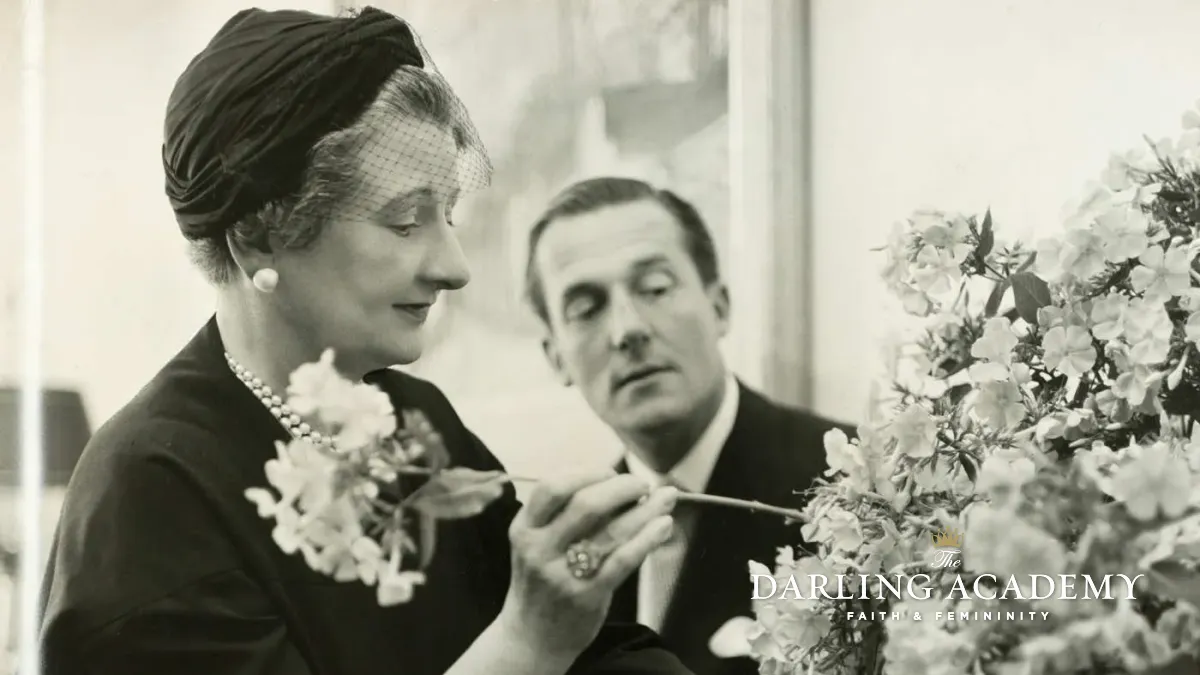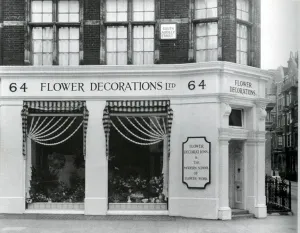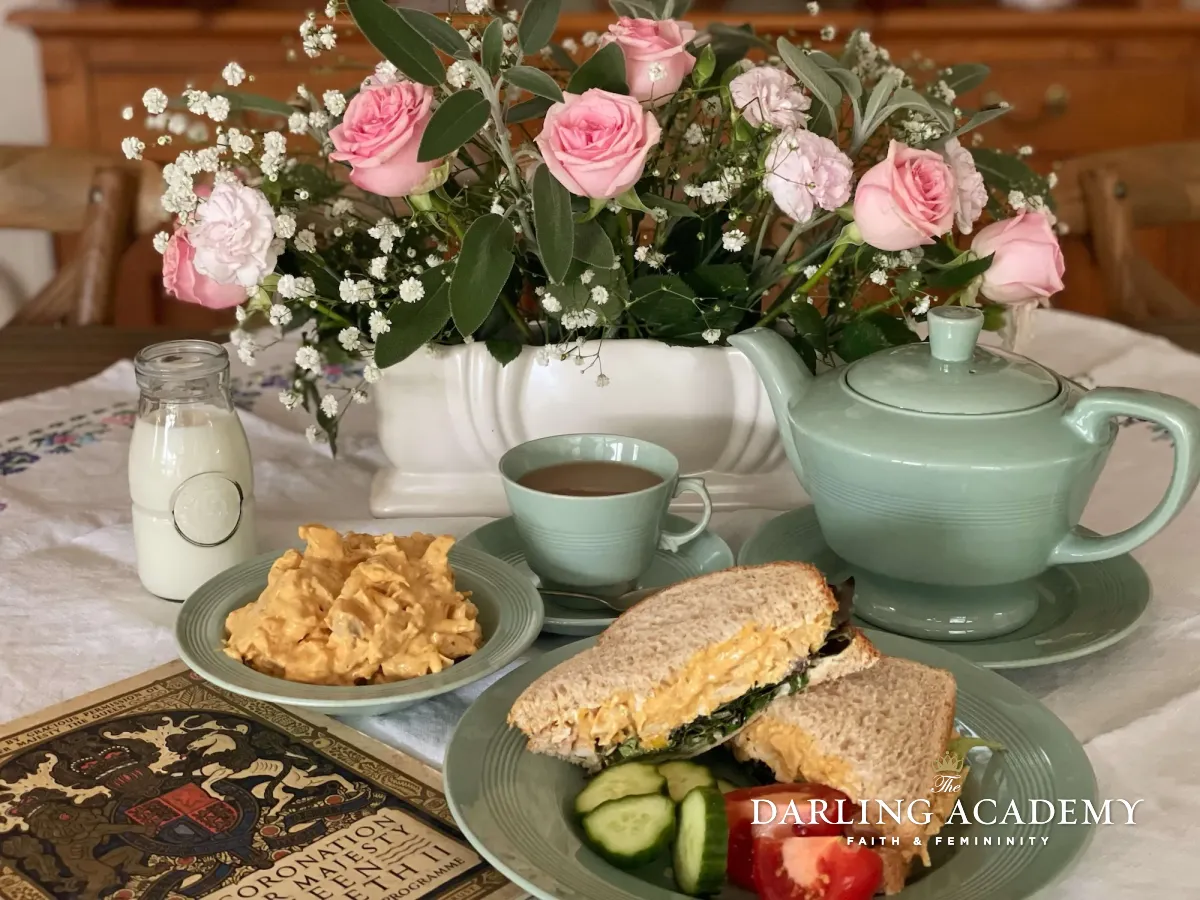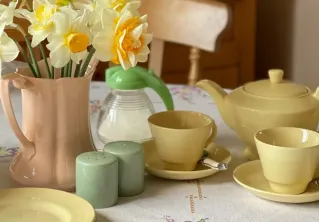Coronation Chicken, the original 1953 recipe by Constance Spry

The 1953 Coronation of Queen Elizabeth II was a grand and deeply symbolic event that captured the hopes of a nation emerging from the hardships of World War II. Held on June 2, 1953, at Westminster Abbey, the ceremony was steeped in centuries of tradition, yet marked by modern touches that made it truly historic.
In honour of the late Queen, I wanted to pay homage to the 72nd anniversary this week, and cook up a real classic… It is a bit of a British tradition to create a new “dish” to celebrate such monumental moments, and back in the 1950s, who better to ask than someone understanding of the things that make cooking and homemaking a real joy?
Ah, that eponymous age of women being celebrated for excelling in domesticity…
We all know of Martha Stewart, Delia Smith, Julia Child, and even Mrs Beeton - but did you know there was another doyenne of the domestic arts that you might not have heard of before?
Enter, Ms Constance Spry.
Who was Constance Spry?
Constance Spry was a woman of quiet courage and remarkable creativity. During World War I, she served as secretary of the Dublin Red Cross, but after leaving an abusive marriage in 1916, a bold move for the time, she returned to England with her son and began work as a welfare supervisor. By 1917, she was head of women’s welfare at the Ministry of Aircraft Production, where she met Henry Spry, her lifelong partner. It was never known if they ever ’officially’ married, had they not, it would have been taboo back in the day.
In 1921, Constance became headmistress at a girls’ school in East London. There, among poverty and hardship, she began bringing in small posies of flowers from her garden to brighten up the dreary classroom. She was struck by how much joy they brought to the girls, and soon began teaching them how to gather and arrange simple greenery, like pussy willow, grasses, or ornamental kale using everyday containers like jam jars. This humble, natural approach to floristry would go on to define her entire career and was a world away from Victorian fashions that had so far governed floristry.
 Constance Spry with Hardy Amies, 1960
Constance Spry with Hardy Amies, 1960
In 1929 (and by now in her early 40’s), she opened Flower Decorations, a shop in Pimlico, London. Her natural, daring arrangements, featuring hedgerow blooms and twigs quickly caught the attention of high society. A contract with Granada Cinemas brought publicity, but it was her striking window displays for the royal perfumer Atkinsons of New Bond Street that truly set her apart. So unusual were her arrangements that passersby reportedly stopped in their tracks, captivated.

In 1936, Constance Spry’s shop Flower Decorations was entrusted with one of the highest honours in British society, creating the floral arrangements for the royal wedding of the Duke of Gloucester to Lady Alice Montagu-Douglas-Scott. Just months later, her signature style was called upon again, this time for one of the most scandalous weddings in modern royal history, that of Wallis Simpson and the Duke of Windsor in June 1937. Then for Princess Elizabeth’s wedding in 1947.
 Princess Alice, the Duchess of Gloucester on her wedding day
Princess Alice, the Duchess of Gloucester on her wedding day
However, her crowning achievement came in 1953, when she was asked to arrange flowers for Queen Elizabeth II’s coronation. That same year, she and friend Rosemary Hume, co-founders of the London branch of the Cordon Bleu Cookery School, created a special dish for the coronation banquet: the now-classic Coronation Chicken.
I want to shout to all women: stop being ashamed of doing something well! You can be creative in the home as much as in any studio. Constance Spry
That same year, Constance was awarded an OBE in the Coronation Honours, recognising her outstanding contribution to British culture, through both flowers and food.
She also designed a series of vases that were intended for the mantelpiece, you may have seen them in charity shops over the years. They are really lovely to arrange flowers with, simply pop a small piece of chicken wire inside to act as a ’frog’.
 My Constance Spry vase
My Constance Spry vase
There is also a rather lovely rose named for her by British rose grower David Austin. Constance Spry is a beautiful mid-pink climber that was introduced in 1961. I plan to plant one this winter, and think it’ll look lovely climbing through our white fence in the front garden with underplanting of English lavender.
I also found this video by British Pathé, the wall vase and baking tray are quite something! I just love how she used things like Kale and Artichokes. My arrangement in the recipe picture below is in homage to Constance, I added some sage from my herb garden!
![]()
What is Coronation Chicken?
Coronation Chicken is a classic British dish made with cooked, shredded chicken in a creamy, mildly spiced curry sauce. It’s not spicy at all, and has a delicious flavour profile. It’s creamy and tasty, but not too heavy.
Designed to be served cold and prepared in advance, this dish was ideal for feeding large numbers of guests at official society luncheons or garden parties. The original recipe featured a blend of poached chicken, mayonnaise, curry powder, apricot purée (or sometimes mango chutney), lemon juice, and cream, creating a balance of rich, fruity, and lightly-spiced flavours.
Coronation chicken is still incredibly popular in the UK, and a mainstay of sandwich fillings - it’s a real favourite of my husband’s! I just wish the last coronation dish had been as exciting, sadly it hasn’t been put on repeat like Coronation Chicken has for the past seven decades!

It really is best enjoyed in sandwiches on wholemeal bread with some fresh lettuce, but is also good alongside salads, or even as a jacket potato filling. You’ll have to make your own mind up on how you prefer it.
It’s a dish that remains a nostalgic nod to post-war British optimism and royal tradition.
![]()
How to make Coronation Chicken, the original 1953 recipe
I have kept close to the original recipe, but added alternatives denoted with an asterisk (*) if you have trouble finding some of the ingredients.
Please note that I used a Rotisserie chicken instead of cooking my own - I’d bet my last penny on the fact that women in the 50s would have done this too if they had been readily available. Considering a rotisserie costs the same as a whole uncooked chicken in Australia, the shortcut made sense! Some consider it cheating, others might say that due to the cost of living today, and fuel prices these days to run an oven or use gas - having the supermarket cook it for you is a win-win situation! ;)
Serves: 6
Not suitable for freezing, but will keep for 5 days if refrigerated, in an airtight container.
Ingredients for Coronation Chicken
- 1kg (about 2lb) Chicken breast
- 1 tbsp Vegetable Oil (*or a light olive oil if you prefer)
- 1 small, finely chopped white Onion
- 1 tbsp Curry Paste (*you an use the equivalent of powder. I used Patak’s Tikka Masala)
- 1 tbsp Tomato Purée
- 100ml Red Wine (*or 1 tsp of Red Wine Vinegar in 100ml of Water)
- 1 Bay leaf
- The juice of half a Lemon
- 4 puréed** Apricot halves (*fresh is ideal, but you can also used dried, or tinned apricots. If using dried, chop instead of blending)
- 300ml (1/2 pint) Mayonnaise
- 100ml (4 fl oz) Whipping Cream (or Heavy/Double)
- Salt and Pepper
- Watercress to garnish
** I used a Nutribullet as the original recipe calls for purée, but you can also chop them very small if you wish. Lots of modern iterations serve this dish with chopped apricots for texture.
*** You can also use a small handful of raisins of sultanas in addition, or to replace, the apricots.
**** A heaped tablespoon of apricot jam, or mango chutney can be used instead of fresh or dry apricots in a pinch.
How to make Coronation Chicken:
- Cut the poached chicken into small pieces. Set aside to cool. (*Or shred a Rotisserie chicken).
- In a small saucepan, heat the oil, add the onion and cook for about three minutes, until softened.
- Add the curry paste, tomato purée, wine, bay leaf and lemon juice into the saucepan, and simmer uncovered for about 10 minutes until well reduced.
- Remove the bay leaf, and leave the sauce to cool.
- Purée the chopped apricot halves in a blender, or food processor, or chop finely.
- Mix the cooled sauce into the mayonnaise, along with the apricot purée.
- Whip the cream to stiff peaks and fold into the curry mixture.
- Season with a bit of salt and pepper, adding a little extra lemon juice if necessary.
- Fold in the chicken pieces, garnish with watercress and serve.
![]()
This would have been intended to be served as a cold salad, (hence the watercress garnish), but it works so well as a sandwich filler and is a great make-ahead for weekday lunches. You can also sprinkle over some sliced almonds for extra crunch if that’s your jam.
The British love Coronation Chicken because it’s a delicious blend of tender chicken, creamy mayonnaise, gentle curry spices, and a touch of sweetness from the apricot, making it both comforting and just a little exotic. It carries a sense of celebration, evoking memories of garden parties, summer picnics, and times gone by. More than just a dish, it’s nostalgic comfort food with a royal twist.
You must take the best from the past, stand on it, and go forward. Constance Spry
Let me know if you try it!
With love,

Would you like a taste of more?
If you enjoyed this post, then my vintage recipes archive might also be of interest.
PS - yes, the Beryl is back! I lasted 18 months without her in my life. It was far too hard parting with her forever in the end. My old collection was mostly gifted to friends, and some of it sold to fellow collectors when we emigrated to Australia. It felt right to do that at the time, but she’s too hard to resist for long. Isn’t it funny how something can really feel like it’s part of us!? Beryl (and a spot of Jasmine) has been in my life since I started homemaking at 18 years old, it would be a shame to continue without her.
Thank you as always to the Patrons of The Darling Academy! Your support means the world to me.
All content and images in this article are copyright of The Darling Academy and are not to be shared or reproduced without our express permission. Some images sourced from Google, all rights remain with their owners.



